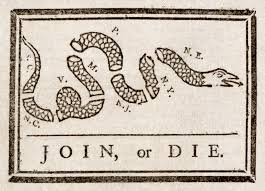The Battle of the Clouds: — Part 4 of 5
The British
Back at Brandywine the day after the battle, the British also buried the dead.
Masters of the field, the victorious Redcoats were responsible for the wounded, dying, and dead of both armies.
The Birmingham Meeting House itself became a triage unit for both British and American wounded. Officers, of whom "several of distinction had fallen," were operated on first. Doors were ripped from hinges to serve as gurneys and ad-hoc operating tables.
The only military operation on the 12th involved General Grant, who had been sent two miles east of the battlefield to scout in the direction of the American retreat.
Howe Come?
Critics accuse Howe of missing an opportunity to follow up on his triumph of the succeeding day. They argue that he might have vanquished Washington's army once and for all, or failing that at least chase the Americans into Philadelphia. The least he could have done was move out and cut the Rebels from their supply base at Reading. So, the question persists. How come Howe did not attack follow up on the 12th?
In all fairness to the British commander in chief, his army had just fought an exhausting battle the day prior. Many of his men had spent the day marching 17 miles at a quick pace; others had fought for hours under a blazing sun.
True the British had won the field in almost textbook-fashion, with the columns of Cornwallis and Knyphausen tied together in an near-perfect line. But Howe would have to follow up through unknown country without guaranteed supply lines — something the chary general was always reluctant to do. Moreover he was wary of falling into traps and losing soldiers needlessly. Soldiers were very difficult to replace. Further, Howe had over 400 wounded to tend to. Genuinely solicitous of his men, the British general made sure they were tended to the day following the battle.
On September 13, 1777, General Howe turned his thoughts to Wilmington, where he intended to establish a base for his fleet when the British navy approached the Delaware River from the Head of Elk. A cavalry corps was sent to the city and captured the town without a fight. Though the Americans had fortified Wilmington, the timorous militia posted in the city retreated at the first sign of the enemy. The British booty included several cannon.
After the British took the city, Howe transported his Brandywine wounded to Wilmington. He also set up a garrison there, in case the Americans had any thoughts of recovering the city.
Finally, on the 15th, after four dilatory days, Howe gave the orders to move out. Presumably he was headed toward the upper fords of the Schuylkill, as the British would have to cross the river to capture either Philadelphia or Reading. Lord Howe consulted with Generals Cornwallis and Knyphausen to plan an attack. As he was holding this war council, Howe received intelligence reports detailing precisely where the Americans had crossed the Schuylkill and that they were marching along the Lancaster Road. The left the Americans just ten miles away.
To the Battle of the Clouds
Both generals were ready to go at it again.
Washington had "firm intent on giving the enemy battle."
And the opportunity to do battle with the Americans was one Howe anticipated. Accordingly he divided his troops into two columns. At midnight on the 16th, the column led by Cornwallis set out.
Both armies moved toward the fateful events of the day. None of the commanders consulted Poor Richard's Almanack to check the weather forecast, though.




